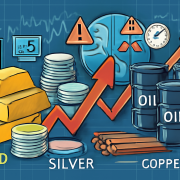US equities have been on a bull run since, well, take your pick.
The Great Financial Crisis low of March 2009, when the S&P 500 hit the devilish level of 666? Or maybe from March 2020, when the world shut down as the COVID crisis took hold. Dot-com bust, anyone?
There’s an awful lot of chatter about parallels between the meltdown at the beginning of this century and what could happen if/when the current AI-driven melt-up hits a brick wall.
Other analysts have even suggested that we’re still in a bull market, which began after the Wall Street Crash of 1929.
These are all perfectly reasonable starting points. But it may be more helpful to consider October 2022 as the base camp for this rally.
This was when US equities finally found a bottom after a truly dismal year. If so, then this leg of the equity market rally has been running for three years.
Within this, the only significant pullback occurred in April after President Trump unleashed reciprocal tariffs on US trading partners.
Since then, US stock indices have ground steadily higher. That’s great for investors, but fairly dismal for traders.
Now it feels as if things are starting to heat up again following the sharp sell-off earlier this month.
And, as it was in April, tariffs proved to be the trigger for what was the biggest one-day decline in the major US indices since, well, April.
It’s quite ironic that this should be the case.
Tariff concerns completely evaporated this summer, just about the time that the Trump administration extended its 90-day postponement of levies on US imports from China for an additional three months.
This meant that the US and China had until 1st November to hammer out their trade disagreements.
That seemed like an aeon away when the extension was announced in August. But as October flies past, the deadline is fast approaching.
It’s plain that China is in no mood to prostrate itself before President Trump.
Beijing views itself as equally matched with the US in terms of trade and far superior in everything else.
Its threat to restrict exports of rare earths and other critical minerals enraged the Trump administration, leading to a further upping of the tariff ante at a rather crucial moment.
President Trump subsequently backed down to a large degree, effectively insisting that negotiations would be fine and everyone would be happy with the result.
But it feels as if the genie is out of the bottle and the stakes have been raised significantly ahead of the 1st November deadline.
Meanwhile, gold powers to new all-time highs on a daily basis. It has, for many years, been a very boring trade.
The last bull market, which began in the early noughties when prices traded around $250 per ounce, took gold to an all-time just above $1,900 in 2011.
This was followed by a protracted bear market. Now we’re back in a bull market again. The question is when, or where, it will end.
Some analysts see gold rallying past $5,000 to $8,000 or even beyond.
But one factor to consider is just how long this bull market has been running so far.
Some analysts point to the summer of 2020 when gold broke above its old record.
Others say it began three years ago when, having poked above $2,000 for the first time, gold dropped towards $1,600.
There’s an argument to say it started in December 2015 when it came close to $1,000 an ounce, and the five-year bear market finally ended.
If it is the latter, then this bull run is nearly ten years old, which means it’s already very long in the tooth. Who knows for sure? But at least it’s no longer boring.
(David Morrison is a Senior Market Analyst at Trade Nation. Views are his own.)
The post Are we there yet? appeared first on Invezz





